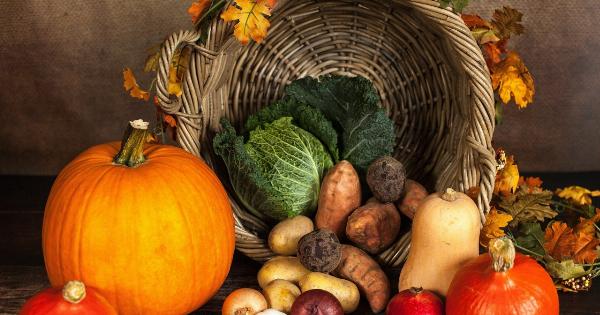Most people know that eating fruits and vegetables is good for them.
Fruits and vegetables contain essential vitamins, minerals, and fiber that provide numerous health benefits, including preventing chronic diseases such as heart disease, cancer, and diabetes.
However, it’s not just about eating any amount of produce. It’s about eating the optimal amount of produce to achieve a healthy and sustainable lifestyle.
In this article, we will discuss the optimal amount of produce that one should consume and how it can benefit their overall health and the environment.
What is the Optimal Amount of Produce?
The optimal amount of produce varies depending on several factors, including age, gender, height, weight, and level of physical activity.
However, the United States Department of Agriculture (USDA) recommends that adults aim for 2-3 cups of vegetables and 1.5-2 cups of fruits per day.
While this may seem like a lot of produce to consume in a day, it’s important to note that a cup of produce is not a large amount. One cup of vegetables is about the size of a baseball, and one cup of fruit is about the size of a tennis ball.
Additionally, consuming a variety of fruits and vegetables is essential to ensure that one is getting a diverse range of nutrients.
Health Benefits of Consuming the Optimal Amount of Produce
Consuming the optimal amount of produce can provide numerous health benefits, including:.
1. Lower Risk of Chronic Diseases
Fruits and vegetables contain essential vitamins, minerals, and fiber that provide numerous health benefits, including preventing chronic diseases such as heart disease, cancer, and diabetes.
A diet rich in fruits and vegetables can lower blood pressure, improve cholesterol levels, and reduce inflammation in the body.
2. Improved Digestion
Fruits and vegetables contain fiber, which helps to keep the digestive system healthy and functioning properly. Fiber provides bulk to the stool, making it easier to pass, which can prevent constipation and other digestive issues.
3. Weight Management
Fruits and vegetables are low in calories and high in fiber, meaning they can help one maintain a healthy weight. Consuming fruits and vegetables can help one feel full and satisfied, reducing the urge to consume unhealthy snacks and desserts.
4. Improved Mental Health
Consuming a diet rich in fruits and vegetables can improve one’s mental health.
Studies have shown that consuming a diet high in fruits and vegetables can reduce the risk of depression and anxiety, reduce stress levels, and improve cognitive function.
Environmental Benefits of Consuming the Optimal Amount of Produce
Consuming the optimal amount of produce not only benefits one’s health but also benefits the environment. Fruits and vegetables require fewer resources to produce and have a lower environmental impact compared to animal-based foods.
Consuming fruits and vegetables reduces one’s carbon footprint, as animal-based foods require more water and land to produce and contribute to greenhouse gas emissions.
How to Incorporate More Produce into Your Diet
Incorporating more fruits and vegetables into one’s diet may seem daunting, but it’s easier than one may think. Here are some tips on how to incorporate more produce into your diet:.
1. Plan Ahead
Planning out meals and snacks ahead of time can make it easier to incorporate more fruits and vegetables into your diet. Consider adding fruits and vegetables to your grocery list and planning meals that feature produce as the main ingredient.
2. Keep Produce Visible
Keeping fruits and vegetables visible and easily accessible can make it easier to consume them. Consider keeping a fruit bowl on your kitchen counter or packing vegetables as a snack to take with you on-the-go.
3. Experiment with New Recipes
Experimenting with new recipes can make it easier to incorporate more produce into your diet. Consider trying new fruits and vegetables or experimenting with different cooking methods, such as roasting or grilling.
Conclusion
Consume the optimal amount of produce can provide numerous health benefits and benefit the environment.
By incorporating more fruits and vegetables into one’s diet, one can lower the risk of chronic diseases, improve digestion, manage weight, improve mental health, and reduce their carbon footprint.































